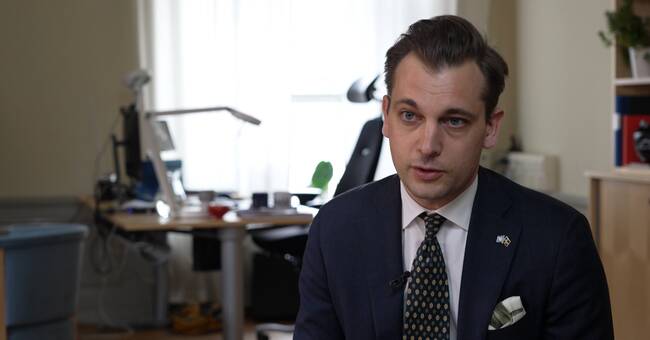This year, the Swedish development assistance authority Sida is distributing 4,225 million in humanitarian aid in connection with various crises, and that is more than ever.
- It is an incredibly serious development that we see, says Jakob Wernerman, who is head of the department for humanitarian aid at Sida.
The corona pandemic has exacerbated the situation in many poor communities and also made it more difficult to get money from the richer part of the world.
- The economies of all countries have been hit hard by the pandemic and we see uncertainty in many countries how to be able to maintain their solidarity with the outside world.
Countries such as the United Kingdom, for example, are reducing their aid.
But in Sweden, we stand up for and stand by our one percent goal, says Sweden's Minister for Development Aid Per Olsson Fridh (MP).
It is not relevant for Sweden to reduce
At the end of 2020, the United Kingdom lowered its previous development assistance target from 0.7 per cent of gross national income to 0.5 per cent.
This is in line with the trend in the EU.
According to the aid organization's umbrella organization Concord, EU member states spend an ever smaller share of their income on aid.
For Sweden, it is not relevant to reduce aid, despite the crisis, according to Per Olsson Fridh:
- If we are to fight the pandemic, if we are to be able to fight climate change, if we are to make the world a little safer, then we must also stand up for this kind of solidarity, he says.
The five biggest crises that Sida provides assistance to this year are the Syrian crisis, the war in Yemen, South Sudan, the situation in the Democratic Republic of Congo, and the situation of refugees and other vulnerable people in Ethiopia.
Several reasons behind the need
The corona pandemic has made the humanitarian situation even more serious in those parts of the world that are already most vulnerable.
But the growing need for humanitarian aid has several causes.
- There are several factors that contribute to the serious development. On the one hand, we have more and more complex and protracted armed conflicts in several parts of the world. Climate change affects both the intensity and frequency of natural disasters. And socio-economic development is getting worse in parts of the world, says Jakob Wernerman.

